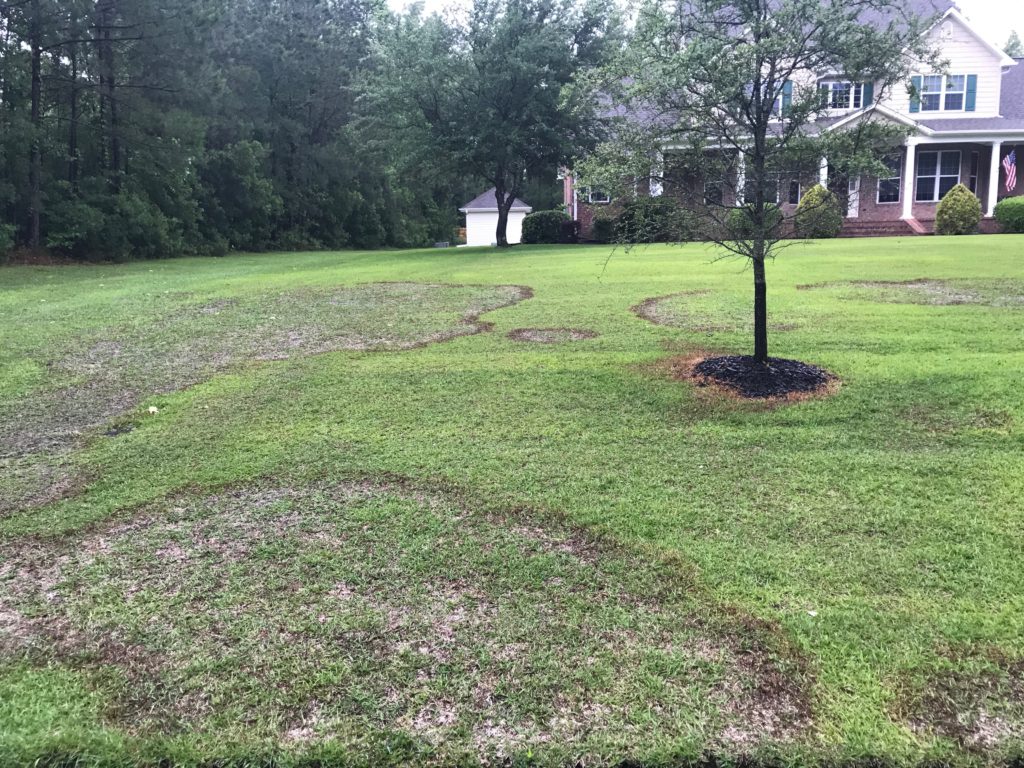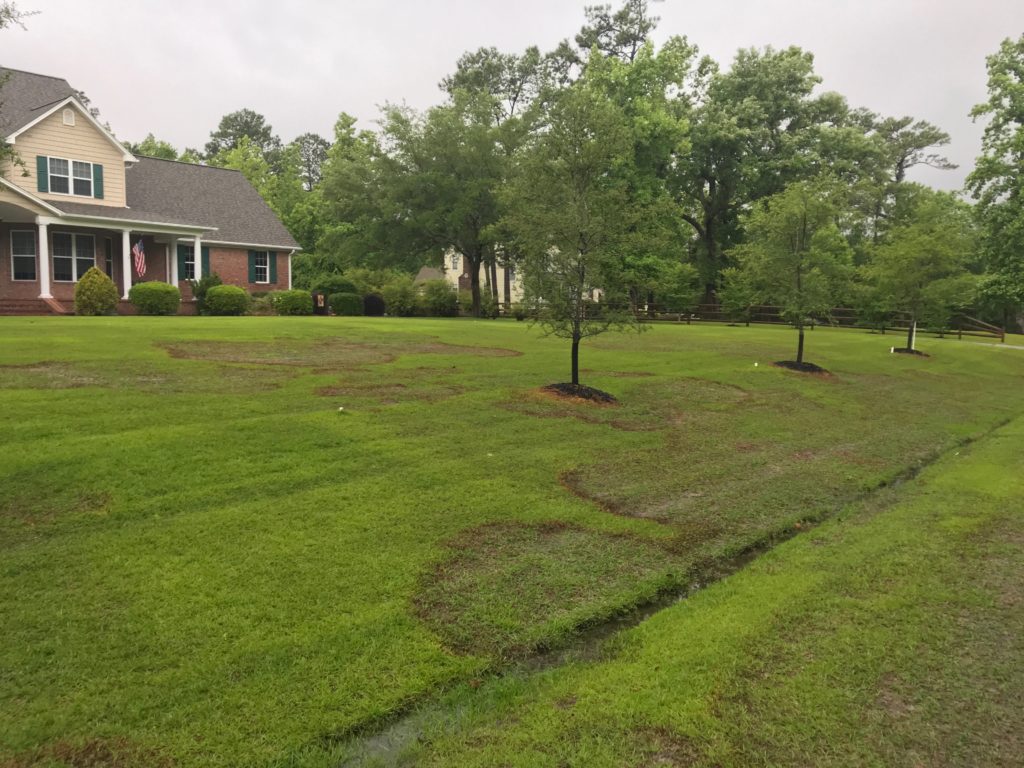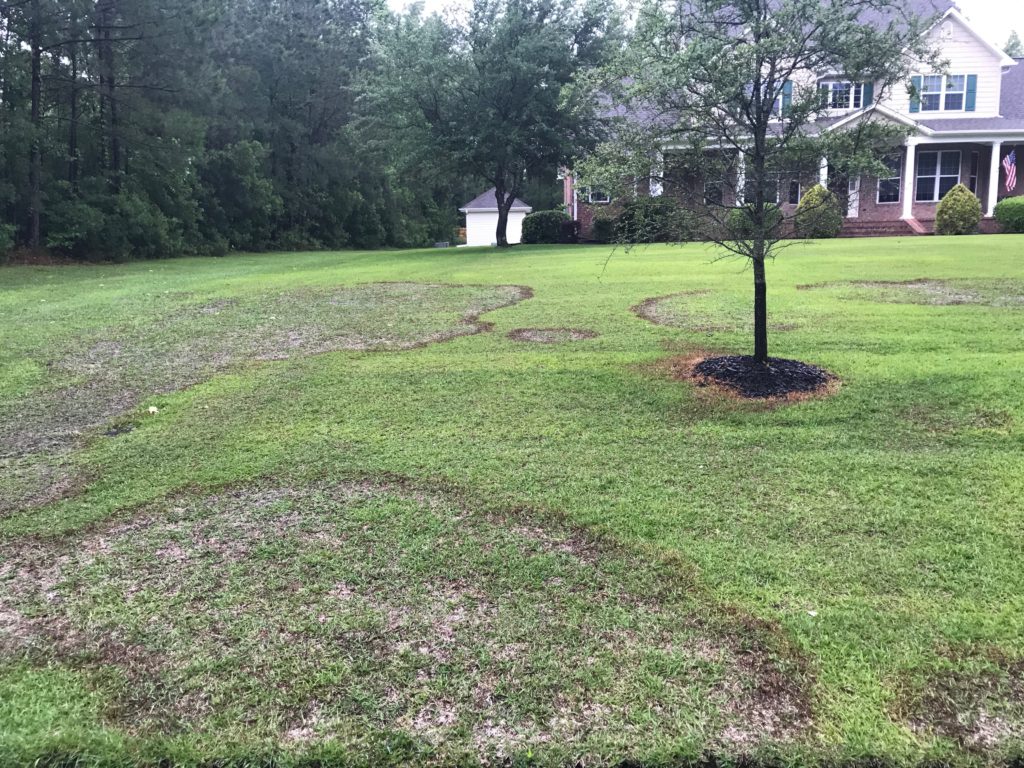Cool Spring Weather Extends Large Patch Injury on Warm-Season Turf
Large patch, caused by the fungus Rhizoctonia solani, is one of the most damaging diseases of warm-season turf species such as centipedegrass, St. Augustinegrass, zoysiagrass, and seashore paspalum. Bermudagrass rarely sustains significant damage from large patch and grows of out the symptoms quickly when the disease does occur. In general, development begins in the fall when soil temperatures begin to fall below 80°F on St. Augustinegrass and below 70°F for all other warm-season turfgrasses. However, symptoms do not always show up in the fall before warm-season turfgrasses go dormant. Late summer and fall symptoms are most likely to occur on St. Augustinegrass. Large patch continues to infect and spread in the plant throughout the fall and even into winter in coastal areas of North Carolina. In the spring, infected areas begin to show up as these warm-season turfgrasses green up. Spreading occurs on new tissue (primarily stolons and leaf sheaths) and will appear as circles and irregular areas of blighted turf.

Large patch symptoms in a centipedegrass lawn in eastern North Carolina on May 21, 2020.
When we have warm winters like 2019-2020, large patch can be especially active. This spring turf greened up early in many locations, but our cool and wet spring weather has caused turf growth to be very slow. As a result, the conditions for large patch have been very favorable and has extended into late May. Generally symptoms will go away when soil temperatures rise above 70°F, and air temperatures are regularly reaching 80-90°F.
So, what should you do now? In most cases a fungicide treatment might stop the symptoms now, but may not be necessary. Spring fungicide applications should be made as soon as symptoms appear to be most effective. Areas that have been affected by disease symptoms should be fertilized at recommended rates for your turf type as symptoms disappear over the next few weeks to aid recovery. Recovery will come from new growth once conditions are favorable for warm-season turfgrass growth.

Large patch symptoms in a centipedegrass lawn in eastern North Carolina on May 21, 2020.
Cultural practices that will help reduce large patch include improving drainage, reducing irrigation to only as needed during dry periods, and reducing thatch. As a reminder, do not apply nitrogen in the fall to warm-season turf.
Fall fungicide applications are the most effective beginning in late August or early September once those soil temperatures are consistently in an 80-70°F range. Again, spring fungicide applications at green-up may help reduce severe large patch infections, but they will not provide a fast miracle cure when symptoms are already present.
For more information on large patch, including control recommendations, please visit the link below:
Large Patch Disease Profile
For more information on how to manage warm-season turfgrasses, please visit the maintenance calendar for each below:
Bermudagrass Lawn Maintenance Calendar
Centipedegrass Lawn Maintenance Calendar
St. Augustinegrass Lawn Maintenance Calendar
Zoysiagrass Lawn Maintenance Calendar
This article was originally written by Matt Martin and updated by Lee Butler on the NC State Extension website here.
